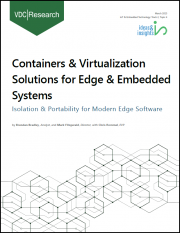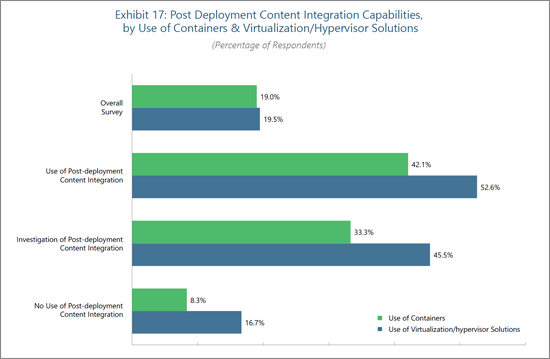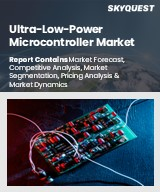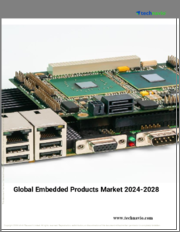
|
시장보고서
상품코드
1698619
엣지 및 임베디드 시스템용 컨테이너 및 가상화 솔루션Containers & Virtualization Solutions for Edge & Embedded Systems |
||||||
클라우드 네이티브 개발 프로세스, 격리 기능에 대한 요구, 복잡한 임베디드 시스템으로 엣지 및 임베디드 컨테이너 및 가상화 솔루션 시장은 향후 5년 동안 크게 성장할 전망입니다.
이 보고서는 IoT 및 임베디드 애플리케이션 컨테이너 및 하이퍼바이저 솔루션과 이와 관련된 서비스 시장을 조사했으며 새로운 엔지니어링 추세, 이용 사례, 시장 동향 및 공급업체 전략에 대한 자세한 분석을 포함합니다.
어떤 질문에 대응합니까?
- 엔지니어링 기업이 컨테이너 및 가상화 솔루션을 채용하는 요인은 무엇인가?
- 파트너십과 M&A는 컨테이너 및 가상화 솔루션 시장에 어떤 차별화를 가져오고 있는가?
- 컨테이너 기술의 지속적인 채용을 막는 장벽은 무엇인가?
- 엔지니어링 조직이 컨테이너와 가상화 솔루션을 사용하기 위한 전제조건으로서 어떤 기술과 개발 프랙티스가 도움이 될까?
- 컨테이너와 가상화 솔루션의 현재 사용 상황과 기대되는 사용 방법은 업계에 따라 어떻게 다른가?
게시 조직
|
|
|
주요 조사 결과
- 보안 요건은 컨테이너와 가상화 솔루션의 채용, 공급업체간의 구입 결정에 있어서 여전히 중요한 요인이 되고 있습니다.
- 기존에는 엔터프라이즈/IT 시장이나 이용 사례에 중점을 둔 컨테이너 기술 공급업체가 엣지, 임베디드, IoT용으로 솔루션을 커스터마이즈하는 경향이 강해지고 있습니다.
- 리소스에 제약이 있는 프로젝트에서는 가상화와 컨테이너 기술의 양쪽 모두가 증가하고 있습니다.
보고서 발췌
배포 후 컨텐츠 통합을 강화하는 컨테이너 키

현재 임베디드 프로젝트의 기능과 가치는 소프트웨어에 의해 정의됩니다. 개발 후 소프트웨어 기능을 장치에 지속적으로 제공하는 능력은 다양한 산업의 OEM에 대한 경쟁 전략의 중심이 되고 있습니다. 슈퍼바이저 솔루션을 활용하기 위해 노력하고 있습니다. 현재의 프로젝트에서 출하 후 컨텐츠 대응이 요구되는 임베디드 엔지니어들은 이러한 요구 사항이 없는 프로젝트에 비해 컨테이너 및 가상화/하이퍼바이저 솔루션을 크게 활용하고 있는 것으로 나타났습니다.(그림 17 참조).
목차
이 보고서의 내용
어떤 질문을 다룰 수 있는가?
이 보고서를 읽을 사람은 누구입니까?
이 보고서에 게재된 조직
주요 요약
- 주요 조사 결과
세계 시장 개요
서론
- 시스템의 복잡성이 하이퍼바이저의 도입을 촉진
- 클라우드 네이티브 프랙티스의 가상화 이해
- 규제의 추풍이 컨테이너 이용을 촉진
- 도입의 허들에 직면하는 컨테이너
최근 시장 동향
- 파트너십 및 인수
- Broadcom : VMware 인수
- Green Hills Software : S32 CoreRide 플랫폼에서 NXP와 제휴
- Mirantis : Shipa 인수
- QNX 및 Microsoft : 클라우드 퍼스트, 변화 레프트 개발을 실현
중요 시장 요인
- 조직
- Cloud Native Computing Foundation
- 기준 및 규제
- MOSA(Modular Open Systems Approach)
- OCI(Open Container Initiative)
수직 시장
- 항공우주 및 방위
- 자동차/철도/운송
- 산업 자동화
지역 시장
- 아메리카
- 유럽, 중동 및 아프리카
- 아시아태평양
경쟁 구도
- 주요 공급업체의 인사이트
- Canonical
- Elektrobit
- Green Hills Software
- Mirantis
- QNX, a division of BlackBerry
- Red Hat
- SYSGO
- Wind River
최종 사용자 인사이트
- 배포 후 콘텐츠 통합을 향상시키는 컨테이너의 핵심
- 컨테이너 및 가상화 솔루션을 채용하는 자동차 업계
- 보안 요구 사항이 컨테이너와 가상화/하이퍼바이저 솔루션 모두 채택
- 더 작은 설치 공간으로 가상화 및 컨테이너화 수요가 증가하는 디바이스
저자 정보
VDC Research 정보
KTH 25.04.28Inside this Report
Cloud-native development processes, demand for isolation capabilities, and increasingly complex embedded systems will drive significant growth in the market for edge and embedded container and virtualization solutions over the next five years. This report examines the commercial market for container and hypervisor solutions and related services for IoT and embedded applications. It includes in-depth analysis of emerging engineering trends, use cases, market dynamics, and vendor strategies.
What Questions are Addressed?
- Which factors are driving engineering organizations to adopt containers and/or virtualization solutions?
- How are partnerships and M&A activity creating differentiation in the markets for containers and virtualization solutions?
- Which barriers remain in the way of continued adoption of container technologies?
- Which technologies and development practices aid in preconditioning engineering organizations to the use of containers and virtualization solutions?
- How do current and expected use of containers and virtualization solutions differ across industries?
Who Should Read this Report?
This research program is written for those making critical business decisions regarding product, market, channel, and competitive strategy and tactics. This report is intended for senior decision-makers who are developing embedded technology, including:
- CEO or other C-level executives
- Corporate development and M&A teams
- Marketing executives
- Business development and sales leaders
- Product development and product strategy leaders
- Channel management and channel strategy leaders
Organizations Listed in this Report:
|
|
|
Executive Summary
The markets for containers and virtualization solutions are being influenced by overarching dynamics and trends influencing embedded development practices. Rising security concerns in the IoT are causing engineering organizations to seek out technologies that can provide isolation capabilities. The complexity of modern development practices (characterized by multicore/heterogenous architectures, mixed criticality, and multiple operating systems) are requiring more advanced virtualization solutions that can simultaneously offer opportunities for hardware BoM consolidation. Overall adoption of cloud-native development practices is familiarizing engineering organizations with containerization, leading to hastened adoption rates across embedded industries. Responding to both the demand for product differentiation through software definition as well as regulatory guidance, embedded OEMs have identified containers as a flexible method of deploying both new product capabilities as well as critical software update packages.
Recent market movements including M&A transactions and partnerships by leading vendors are both solidifying the market positioning of some vendors while opening new opportunities for others seeking to capitalize off embedded market adoption rates. Established market players are looking towards these market dynamics for avenues to update and adapt their solutions, paying particular attention to security and safety.
Key Findings:
- Security requirements remain a key factor behind both the adoption of containers and virtualization solutions, as well as purchasing decision when deciding between different vendors.
- Container technology vendors who have traditionally focused on enterprise/IT markets and use cases are increasingly tailoring their solutions for edge, embedded, and IoT applications.
- Resource constrained projects are increasing their use of both virtualization and container technologies. As use of smaller footprint hardware continues to grow within embedded markets, this market opportunity for vendors of both solutions will continue to expand.
Report Excerpt
Containers Key to Enhancing Post-Deployment Content Integration

The functionality and value of embedded projects are now defined by software. The ability to continuously deliver post-deployment software features to devices is central to the competitive strategies of original equipment manufacturers (OEMs) across vertical markets. In order to deliver this feature to customers, development organizations are turning to the use of containers and virtualization/hypervisor solutions. Embedded engineers facing post-deployment content requirements within their current projects are utilizing both container and virtualization/hypervisor solutions at significantly increased levels [see Exhibit 17], compared to those not requiring continuous post-deployment content integration.
As software definition continues to drive competitive dynamics within embedded markets, and product differentiation becomes a central goal of embedded development, overall use of containers and virtualization/hypervisor solutions will continue to grow. Vendors of container solutions should seek to market their solutions towards the needs of specific industries (e.g., automotive OTA updates). With a growing convergence of domains occurring across software development tool domains, vendors of container solutions should seek to pair their solutions with complementary, adjacent solutions (e.g., continuous integration and continuous delivery (CI/CD) tools) in order to provide development organizations with more wholistic and integrated offerings. Traditionally CI/CD-focused solution providers such as CloudBees and JFrog are increasingly participating in the OTA update market, serving as strong potential partners for container vendors. Industry initiatives and working groups (the likes of the eSync Alliance) can also serve as an additional avenue for container vendors to leverage the growing demand for OTA updates.
Table of Contents
Inside this Report
What Questions are Addressed?
Who Should Read this Report?
Organizations Listed in this Report
Executive Summary
- Key Findings
Global Market Overview
Introduction
- System Complexity Driving Hypervisor Adoption
- Cloud-native Practices Familiarizing Virtualization
- Regulatory Tailwinds Furthering Container Use
- Containers Facing Adoption Hurdles
Recent Market Developments
- Partnerships & Acquisitions
- Broadcom Acquires VMware
- Green Hills Software Partners with NXP on S32 CoreRide Platform
- Mirantis Acquires Shipa
- QNX and Microsoft Enable Cloud-first, Shift-left Development
Important Market Factors
- Organizations
- Cloud Native Computing Foundation
- Standards & Regulations
- Modular Open Systems Approach
- Open Container Initiative
Vertical Markets
- Aerospace & Defense
- Automotive/Rail/Transportation
- Industrial Automation
Regional Markets
- The Americas
- Europe, the Middle East & Africa
- Asia-Pacific
Competitive Landscape
- Selected Vendor Insights
- Canonical
- Elektrobit
- Green Hills Software
- Mirantis
- QNX, a division of BlackBerry
- Red Hat
- SYSGO
- Wind River
End-User Insights
- Containers Key to Enhancing Post-Deployment Content Integration
- Automotive Industry Embracing Containers & Virtualization Solutions
- Security Requirements Drive Adoption of both Containers and Virtualization/Hypervisor Solutions
- Smaller Footprint Devices Increasing Virtualization and Containerization Demand
About the Authors
About VDC Research
List of Exhibits
- Exhibit 1: Global Revenue of Containers, Hypervisors & Related Services for Edge & Embedded Systems
- Exhibit 2: Factors Driving Organizations to Adopt Virtualization/Hypervisor Technology in Current Project
- Exhibit 3: Plans to Use Cloud-based Solutions to Develop Software, by Use of Containers & Virtualization/Hypervisor Solutions
- Exhibit 4: Plans to Use Cloud-based Solutions to Develop Software
- Exhibit 5: Global Revenue of Containers and Related Services for Edge & Embedded Systems, by Vertical Market
- Exhibit 6: Global Revenue of Hypervisors and Related Services for Edge & Embedded Systems, by Vertical Market
- Exhibit 7: Aerospace & Defense Revenue of Containers, Hypervisors & Related Services for Edge & Embedded Systems
- Exhibit 8: Automotive/Rail/Transportation Revenue of Containers, Hypervisors & Related Services for Edge & Embedded Systems
- Exhibit 9: Industrial Automation Revenue of Containers, Hypervisors & Related Services for Edge & Embedded Systems
- Exhibit 10: Global Revenue of Containers and Related Services for Edge & Embedded Systems, by Regional Market
- Exhibit 11: Global Revenue of Hypervisors and Related Services for Edge & Embedded Systems, by Regional Market
- Exhibit 12: The Americas Revenue of Containers, Hypervisors & Related Services for Edge & Embedded Systems
- Exhibit 13: EMEA Revenue of Containers, Hypervisors & Related Services for Edge & Embedded Systems
- Exhibit 14: APAC Revenue of Containers, Hypervisors & Related Services for Edge & Embedded Systems
- Exhibit 15: Global Revenue of Containers and Related Services for Edge & Embedded Systems, by Leading Vendors
- Exhibit 16: Global Revenue of Hypervisors and Related Services for Edge & Embedded Systems, by Leading Vendors
- Exhibit 17: Post Deployment Content Integration Capabilities, by Use of Containers & Virtualization/Hypervisor Solutions
- Exhibit 18: Current and Expected Use of Containers, by Vertical Market
- Exhibit 19: Current and Expected Use of Virtualization/Hypervisor Solutions, by Vertical Market
- Exhibit 20: Factors Driving Organizations to Adopt Virtualization/Hypervisor Technology in Current Project
- Exhibit 21: Factors Driving Organizations to Adopt Container Technology in Current Project
- Exhibit 22: Current and Expected Use of Containers and Virtualization/Hypervisor Solutions within Projects with a CPU/MPU Primary Application Processor
- Exhibit 23: Current and Expected Use of Containers and Virtualization/Hypervisor Solutions within Projects with a MCU Primary Application Processor



















